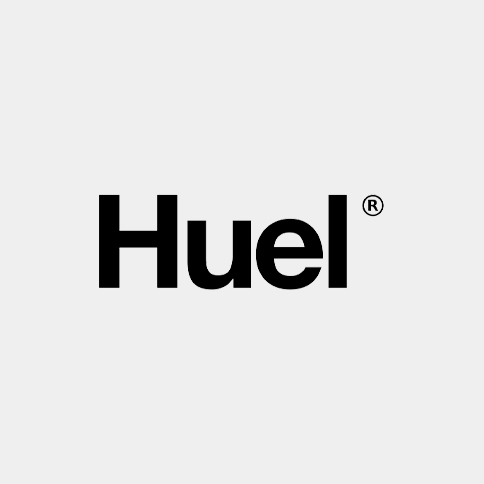Leading Players of Ecommerce Statistics
16. Amazon is the largest ecommerce business in the world.
Amazon.com is one of the most prominent e-commerce companies in the world, offering a vast range of products and services, including online retail, computing services, consumer electronics, digital content, and local services such as daily deals and groceries. Amazon's market value is $867.58 billion.
(Doofinder) - Ecommerce Statistics

17. Walmart is the second largest ecommerce business in the world.
In 2022, Walmart reached global net sales of almost $568 billion, making it the largest retailer in the world by revenue. The company's gross profit margin remains stable at around 24-25% over the last few years. Walmart's market value is a close second at $387.72 billion.
(Doofinder) - Ecommerce Statistics
18. Home Depot is the third largest ecommerce business in the world.
The Home Depot, Inc., often simply referred to as Home Depot, is an American multinational home improvement retail corporation that sells tools, construction products, appliances, and services, including fuel and transportation rentals. According to Home Depot's latest financial reports the company's current revenue (TTM) is $154.87 B. In 2022 the company made a revenue of $157.29 B an increase over the years 2021 revenue that were of $147.69 B. The revenue is the total amount of income that a company generates by the sale of goods or services.
(Companies Market Cap) - Ecommerce Statistics
19. Alibaba is the fourth largest ecommerce business in the world.
Founded in 1999 as a B2B wholesaler, Alibaba Group is the undisputed king of e-commerce in China. Its business spans across multiple categories, including B2B, B2C, and C2C e-commerce, cloud computing, local service, logistics, and financial services. As of November 2023 Alibaba has a market cap of $210.74 Billion. This makes Alibaba the world's 45th most valuable company by market cap.
(Companies Market Cap) - Ecommerce Statistics
Mobile Devices Ecommerce Statistics
20. Mobile Commerce accounts for over 40% of ecommerce sales.
21. The Apple Pay market share of online payments is 6.21%.
While Apple Pay may be dominating the mobile wallets market, it is still a small-time player in the much bigger online payments market. The lion’s share of online payments, or 56.55% of them, are made with PayPal, while Stripe accounts for 20.94% of the online transactions. This places Apple Pay in third place, above Authorize.net, which has a 4.19% share, and Google Pay, which accounts for 3.26% of all online payments.
(Money Transfers) - Ecommerce Statistics
22. 62% of people who own a smartphone have made a purchase using their device in the past six months.
In fact, 62% of people who own a smartphone have made a purchase using their device in the past six months. But mobile users are doing much more than just using these devices to browse online. They are also using phones and tablets to buy.
(Build Fire) - Ecommerce Statistics
23. Mobile commerce sales are expected to account for 6% of all retail sales in 2023
Also known as m-commerce, mobile commerce sales will hit the $415.93 billion mark, accounting for 6% of retail sales, in 2023. Despite this, however, growth is expected to fall to 9.9%. This is the first time it ever dropped below double digits.
(Forbes) - Ecommerce Statistics
Traffic & Conversion Ecommerce Statistics
24. At least 43% of all e-commerce traffic comes from Google's organic search.
According to Reboot, at least 43% of all ecommerce traffic derives from a simple google search leading to customers finding products and brands they are interested in, to then proceed in clicking the results and exploring the site.
(Reboot Online) - Ecommerce Statistics
25. Smartphones accounted for approximately 74 percent of retail site traffic worldwide.
Mobile phones generate most of the digital commerce website visits around the world and also create the largest percentage of orders. As of the first quarter of 2023, smartphones accounted for approximately 74 percent of retail site traffic worldwide and generated 63 percent of online shopping orders.
(Statista) - Statistics
26. Health and beauty sectors average conversion rate is just under 3%.
Online conversion rates of e-commerce sites were the highest in the food and beverage sector, at 3.1 percent in the first quarter of 2023. Sites operating in the health and beauty sector followed, with a conversion rate of just under three percent. For comparison, the average conversion rate of e-commerce sites across all selected sectors stood at two percent.
(Statista) - Ecommerce Conversion Statistics
Shopify Behaviour Ecommerce Statistics
27. Online shoppers spent an average of about 2.3 U.S. dollars per visit across all verticals.
In the first quarter of 2023, online shoppers spent an average of about 2.3 U.S. dollars per visit across all verticals. Luxury apparel is the category in which consumers spent the most money per visit on average, at 2.71 U.S. dollars, followed by home furniture at just over two and a half dollars.
(Statista) - Behavioural Statistics
28. In 2023, market places were the main way shoppers initially search for products.
In 2023, marketplaces were the primary source for starting to search for products online worldwide. According to a survey, roughly three out of ten online shoppers searched for products through this channel. Browsing in-store ranked second, with 18 percent of respondents, followed by search engines and brand websites, each with 14 percent.
(Statista) - Statistics
29. Mobile wallets leading payment method for online transactions.
In 2022, mobile wallets accounted for roughly half of global e-commerce payment transactions, making the digital wallet by far the most popular online payment method worldwide. This share is set to increase to over 54 percent in 2026. Credit cards ranked second with a 20 percent market share in 2021, a figure which is projected to decline in the coming years.
(Statista) - Statistics
Ecommerce Platform Statistics
30. Shopify takes 20% market share of top 1 million sites.
As you can see, WooCommerce Checkout and Shopify own a majority of the share when it comes to ecommerce platforms used by the top 1 million sites. Previously, Magento used to dominate the market. However, currently, it owns almost 7% of the global ecommerce market.
(Cloudways) - Statistics
31. Shopify dominates top 10K ecommerce stores globally as platform choice.
32. 70% of customers abandon the cart before checking out.
Something that really does often surprise the mind, is that 70% of customers will add items to their cart but never checkout. Inisghts of cart abandonment rates shows the importance of a smooth, fast and easy checkout experience for customers. Sellers should consider using automation to contact customers if they do abandon the cart to recoup e-commerce sales with email marketing or SMS prompts reminding customers that they have items left in their cart. Consumer behaviour does vary between industries however employing strategies to keep top of mind to customers that have shown interest can help boost sales and order value. Other factors can effect customers decision to buy such as payment methods, taxes, the design of the store, reviews, product descriptions. The type of channel that you aquire customers from can affect the chances of retail e-commerce sales such as instagram, social media users, direct customers, repeat purchasers and more. Rely on your ecommerce platform or email marketing tool to understand your cart abandonment rates, platforms will often list out the customers who have abandoned their cart and the amount of revenue that has been claimed back from cart abandonment email or SMS campaigns.
Baymard<
Future Of Ecommerce Statistics
33. Ecommerce to continue to grow in coming years.
Over the next four years, it’s predicted that ecommerce growth number will grow by 56%, reaching approximately $8.1 trillion by 2026. Whilst ecommerce sales and performance peaks and troughs, the overal stand is continued ecommerce growth in coming years. Purchases online is a key sales channel fueled by the growth of an improved checkout process, social media, millennials increase usage in technology and retailers investing in online. Shipping, easy carts or online costs and prices are no longer a barrier and trends of shopping online speak for themselves. Buyers are buying a lot from ecommerce sites, industries of all shapes and sizes are investing into advertising, apps, gaining more internet users and improving their shopping experience.
(Statista - Statistics)
34. The number of ecommerce users is expected to hit 3,701.0m by 2028.
In the eCommerce Market, the number of users is expected to amount to 3,701.0m users by 2028. User penetration will be 43.1% in 2023 and is expected to hit 52.5% by 2028. The average revenue per user (ARPU) is expected to amount to US$1.17k.
(Statista) - Statistics
Conclusion
That was our top 34 ecommerce statistics, facts, insights and figures. It's an exciting time to be working in ecommerce with continued growth around the world. This article has explored key statistics for ecommerce including UK, global, country, leading players, mobile device, traffic and conversion, shopping behaviour, platforms and the future. The mind of entrepreneurs need to consider the networks that allow them the level to reach and offer delivery to a wide network of customers via social media platforms. Ecommece businesses need to push past just recommendations and focus on new channels to aquire new customers as a priority. Ecommerce trends are forever changing, and marketers and ecommerce teams have to keep up to date to adapt and overcome new consumer behaviou and maximise on new opportunities. Ecommerce platforms, social media platforms, are continually evolving so it's vital to continue engage in new knowledge in order to offer the best shopping experiences to your customers.
Read Top Shopify Statistics 2025
Read Top Ecommerce Statistics 2025
Read Top TikTok Statistics 2024
Read Top Twitter / X Statistics 2025
Read Top Snapchat Statistics 2025
Read Top Influencer Marketing Statistics 2025


 Nic Dunn |
CEO - Charle Agency
Nic Dunn |
CEO - Charle Agency 




















